The eighties had a slew of children’s TV shows that were released one after the other, all hoping to be able to capture children’s imagination – the decade is practically famous for all the great cartoons that were aired and are remembered fondly to this day. One such show that cropped up was Captain Power and the Soldiers of the Future, riding on the coattails of He-Man and the Masters of the Universe which was reaching the end of its run in 1987.
The plot follows Captain Jonathan Power and his crew of freedom fighters on a post-apocalyptic Earth where Lord Dread’s robotic army has devastated civilization. Captain Power and his men took up the mantle to destroy all the robot armies of the world and thwart all of Lord Dread’s plans. While the premise seems like the eighties enough, with robots and science fiction for days, this tv show ran into a load of troubles that led to its cancellation after only one season. What happened? Keep watching to find out!
What was the show all about? Exploring the first few episodes
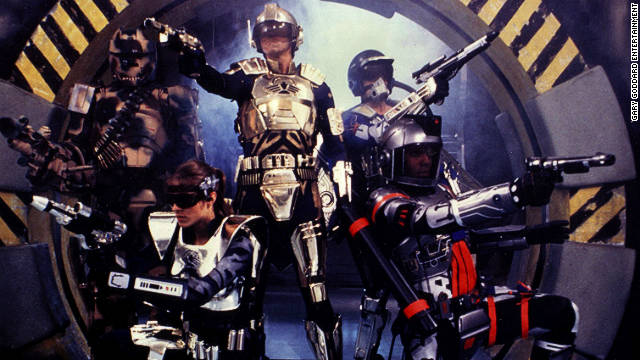
The show was science fiction galore and did not shy away from showing violence. It was a science fiction action television series that aired in Canadian and American syndication for 22 episodes and combined live-action and animation based on computer-generated visuals.
The show was an early example of dystopian Cyberpunk on television, and while being nominally geared at children, it was so dark and violent that many parents protested to Mattel about the show’s tone and themes. The program was written by J. Michael Straczynski, Larry DiTillio, Marv Wolfman, experienced novelist and playwright Michael Reaves, and Marc Scott Zicree of The Twilight Zone Companion and Magic Time fame, while Howard the Duck creator Steve Gerber was set to write for the unproduced second season. After the season one conclusion, Mattel canceled the show because the creators intended to take it in a darker and edgier route.
One of the main things that we have to mention here is that this show went hand in hand with a new and awesome toy line that heavily led to the success of the first season and also was the reason behind a lot of complaints from parents all across the board.
As far as the story goes, it is heavily based on science-fiction tropes and understandings of robot revolutions and the domination of mankind. Following the Metal Wars, a cybernetic revolution that culminated in the human race’s domination by sentient machines, the series was set on Earth in the 22nd century. In the series, Captain Jonathan Power leads a small army of guerrilla fighters known as the “Soldiers of the Future” in their war against the machine forces that rule Earth. But to understand how and why the Soldiers of the Future were even formed, we have to take a look at history.
The story goes as follows – Advanced robotic troops known as “Bio-Mechs” had replaced humans in the world’s armed forces by the year 2132. The existence of Bio-Mechs meant that battles could be conducted with few human casualties, effectively converting combat into a machine-to-machine battle.
Dr. Stuart Gordon Power, Captain Jonathan’s Powers father, along with a group of scientists had begun work on OverMind, a sophisticated supercomputer capable of overpowering the control systems used by the world’s military forces to operate the Bio-Mechs and therefore stopping them, putting an end to the war. To become operational, it needs something akin to human brain patterns. Dr. Lyman Taggart, Dr. Power’s closest associate, became irritated with the project’s slow progress and plugged himself up to the system, finally putting the supercomputer online. However, it doesn’t take an expert to know that experiments like these never end well.
Taggart becomes obsessed with the accuracy and “purity” of machines as a result of the new options provided by the human-machine combination, and persuades himself that integrating human awareness with mechanical bodies is the next stage of human evolution. As they take over Bio-Mech armies around the world and threaten humanity, dragging them into a conflict known as the Metal Wars, OverMind gains self-awareness and shares Taggart’s beliefs.
Dr. Power is enlisted by world governments to find a solution to stop his old colleague, Taggart. He creates a series of prototypes for testing the “Power Suits,” which are a combination of exoskeletal body armour and advanced weapons. A while later, Power appears to die while attempting to save his son, Jonathan from Taggart, despite Jonathan’s belief that his father is still alive someplace. Taggart gets seriously injured during this struggle, but OverMind heals him by embedding cybernetic devices into his body, renaming himself to be Lord Dread in the process. Once an evil moniker has been acquired, we know the villain will now be tough to beat.
After gaining his new person, Lord Dread went on a rampage for many years. Humanity had been mostly exterminated by Lord Dread’s forces by 2147, fifteen years after the Metal Wars broke out. Those who managed to survive the war live wretched lives in hiding for fear of being detected by Bio-Mechs and “digitised” as virtual entities within OverMind.
Dread controlled the entire brutal operation and extermination campaign from his stronghold in Volcania, located in North America. Advanced Bio-Mechs, known as Bio-Dreads and people loyal to Dread carried out the annihilation on his command. The location of Volcania is revealed as being in “sector 9 by 6” in episode 8 “and study war no more.” Its location was said to be near the Great Lakes region of North America is seen on a computer map.
Despite the catastrophic circumstances, a coalition of human soldiers joins forces to combat the Bio-Dread Empire. Jonathan Power’s “Power Team,” one of the most powerful human resistance groups, uses his father’s Power Suits to mount attacks on Bio-Dread soldiers. They depart from the “Power Base,” a derelict NORAD base in the Rocky Mountains, and are led by a supercomputer programmed with Mentor, an artificial intelligence created in Dr. Power’s image and voice to guide his son and the crew.
The episodes that followed from this storyline were 22 minutes long each. The central story arc was Lord Dread trying to wipe out the human population and Captain Powers along with his Soldiers of the Future – trying to stop him.
The first episode starts off with the historical narration of how the apocalyptic condition of the Earth came to be, and we are immediately plunged into a world of robots, violence and lots of gunshots. The tension is high and this tension is maintained throughout the episode.
We watch as the Soldiers of the Future conduct an invasion into a Bio-Dread stronghold, blowing up doors to get into the highly guarded facility. The premise of this episode is that Captain Power is sent out seeking a close buddy he lost conact with during the battle after receiving a cryptic signal from the ruins of San Francisco. It turns out to be a plan to lure Captain Power so that Lord Dread can take a look into his past and find things to hold against him and stop the resistance.
We also see the terrifying villain – Lord dread – they really did not hold back on the character designs, and he is definitely scary, especially if we keep in mind that this is supposed to be a kids show. The main story arc in the show is one regarding Project New Order, Lord Dread’s goal to exterminate human life and establish his ideal world, during the show’s one and only season. There were four stages to the plan.
The first stage was named Styx, which was responsible for the discharge of a powerful toxin into the human population. In the second stage, named Charon, the plan was geared towards the formation of an advanced Bio-Dread warrior force. The third stage, codenamed Icarus was responsible for the development of a humongous orbital platform capable of large-scale digitization.
And lastly, the final stage was called Prometheus and was responsible for the discharge of a plasma storm capable of burning the Earth’s surface. Captain Powers and the Soldiers of the Future had the major task of stopping Lord Dread and foiling his plans. This plan was introduced to audiences in the first episode.
Each episode has a smaller subplot however, it all ties back to the larger mission the group had to stop Lord Dread and his army of robots. The acting is quite good and the fact that this was live-action was amazing to pull off.
The majority of the plot line in the show was loaded with romance and mystery, which was designed for the adults who watched it with their children. As a result, there were a lot of passionate kisses, sexual innuendo, and situations that hinted at sexual experiences between characters in the plot.
There was also some mild profanity. In addition to that, the brutal death of one of the series’ main characters was an uncommon turn of events for a children’s show. Lord Dread’s establishment of a “Bio-Dread Youth,” which recruited young survivors to his ideas in order to achieve his mission, was similarly reminiscent of fascist regimes. These were only some of the things that garnered parents’ displeasure, leading to the cancellation of the show.
The Cool Characters
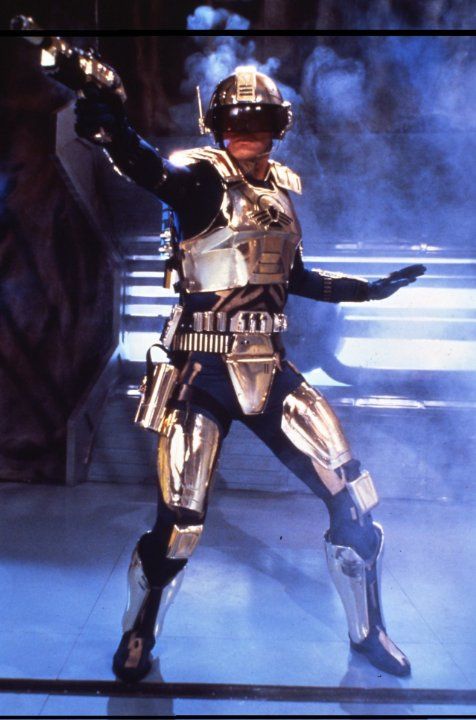
Captain Jonathan Power, the show’s main character, is the son of a notable scientist who attempted to develop a unique computer that could handle all BioMechs on the planet. Captain Power leads a group of “Soldiers of the Future,” also known as “The Power Team,” in combating Lord Dread’s armies. The other members of the superhero team – Soldiers of the Future are as follows.
Major Matthew “Hawk” Masterson was an aviation operations specialist who was regarded as the team’s father figure and a long-time friend of Stuart Power. The team’s burliest member is the genetically modified “Tank” Ellis. He’s a heavy weapons expert who wears a fully armoured power suit.
Next we have Sergeant Robert “Scout” Baker was the team’s communications expert, and he wore a special power suit that could enable him to pass as a BioDread Empire trooper or give him the ability to disguise himself as anyone.
Another Soldier of the Future, Corporal Jennifer “Pilot” Chase, is a former BioDread Youth member and the only female Soldier of the Future. Chase pilots the Jump-Ship, an armoured personnel carrier that functions as the team’s principal aircraft. It is atop this that the Power’s personal aircraft, the XT-7 PowerJet, is parked when not in use. With her death in the season finale (spoiler alert!), she and Power share a mutual attraction that isn’t resolved.
Now we come to the main villain. Lord Dread, formerly known as Dr. Lyman Taggart, was the show’s main nemesis. Taggart, a world-renowned artificial intelligence scientist, rose to the position of Lord Dread after an experiment united his consciousness with that of the computer OverMind. He also had robotic minions that became quite popular – one of them was called Sauron and was a flying robotic creature with a high-pitched voice that definitely gave kids the creeps.
Lastly, we come to Dr. Stuart Gordon Power, or The Mentor. Dr. Power was good friends with Dr. Lyman Taggart until their disagreements over how the BioMechs should be employed appeared. He is the father of the show’s primary hero and the inventor of the Soldiers of the Future’s Power Suits. He dies while attempting to save his son from Taggart’s assimilation. Mentor, an artificial intelligence counterpart of himself, was also constructed to assist Power in living life after his death.
The interactive games and action figures were revolutionary
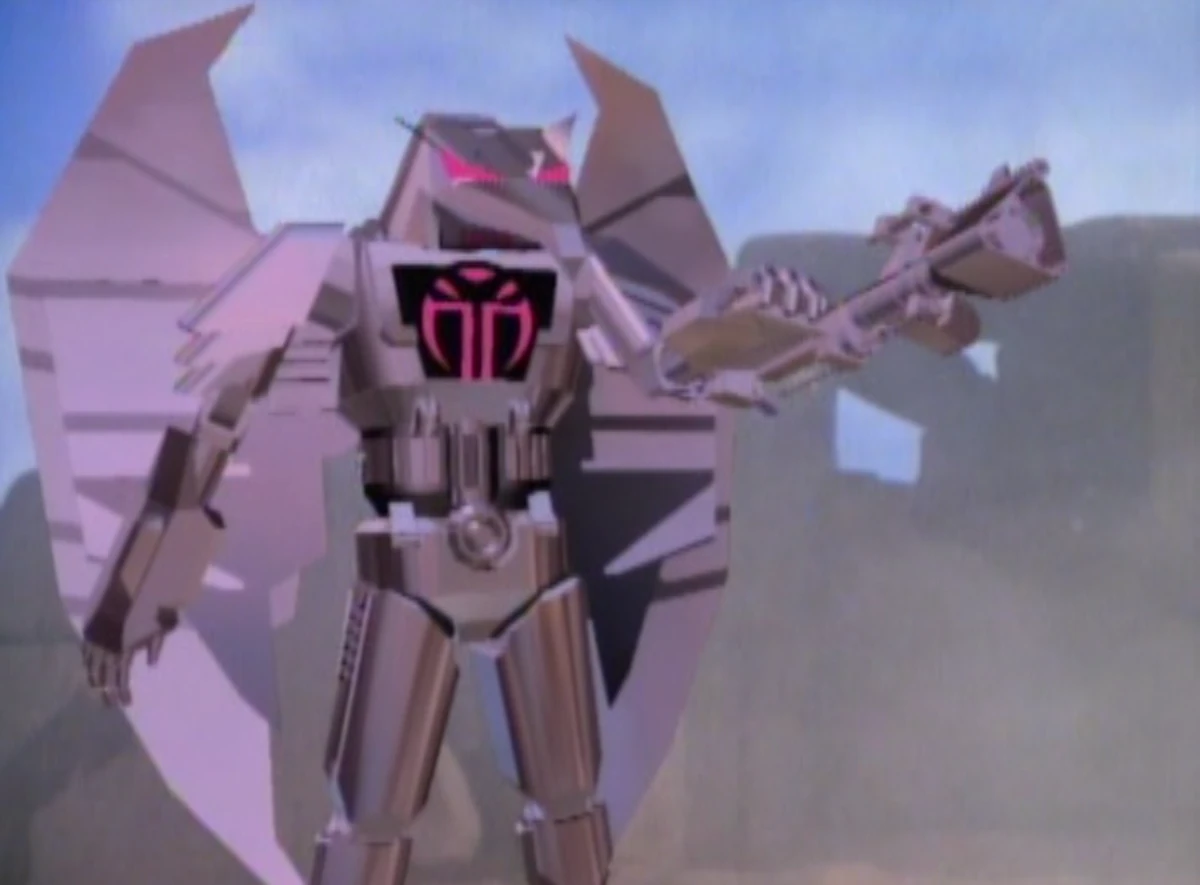
Mattel, the toy giant whose distributor MTS Entertainment was a subsidiary, created a series of toys and interactive tv games. When firing at the screen, some ships and playsets may interact with various elements of the Saturday morning TV show.
The toy line by Mattel that was marketed via this show was quite revolutionary and made the entire viewing experience novel and extremely exciting for kids. The merchandise interactivity that connected the viewer with the show was the show’s biggest attraction because something like this had never been done in the same way before. The electronic toys were modelled on the show’s transformation booth, fighter jets, and other technology and they famously interacted with Captain Power action figures.
The jets might communicate with one another by firing a strobe of light that a receptor on another jet could interpret as a hit. The toys could also interact with one another, similar to the Laser Tag games that were popular at the time. Each toy had a limited amount of hit points when played in this manner, but any points scored by playing against the television show boosted this total.
The toys could also interact with the show as it played on TV: various elements in the display created a strobe effect that the toy could detect. The jets would detect strobes from villains and heroes, weapons fire would create a yellow strobe that would register as a hit, and spectators were gently reminded that concealing the jets behind their backs constituted cheating – to promote an honest but super cool viewing experience.
The “power on” sequence would both restart the damage counter on a jet and start the transformation booth toy’s “power on” cycle. One of the characters would break the Fourth Wall at the end of every episode to tell the audience what is considered a good score.
A toy XT-7 jet that came along with a video cassette was the series’ first interactive toy and game. “Future Force Training,” “Bio-Dread Strike Mission,” and “Raid On Volcania” were the three tapes. Live opening and closing parts with the actors of the television show were included on the tapes. The real mission was animated and took place in the aircraft cockpit from the pilot/first-person player’s perspective.
Players would face the screen while holding the toy jet. The toy was actually a light pistol that responded to signals from the tape player on the television. The toy jet would score points by shooting at selected targets on the screen, but would lose points if the jet’s sensor was “struck.” The cockpit would automatically detach if it reached 0 points. The missions were always the same because the “game” was merely a VHS cassette.
There was also the “Phantom Stryker” Bio-Dread ship, the “Interlocker Throne” for Lord Dread, which comprised of a stationary tank on a tripod with an additional target viewer that could be turned on and off, and the “Power On” platform, which the user could plug the Captain Power figure into. These were all other interactive objects in this cool and novel toy line. The toy would trigger the “Power On” sequence, causing the figure’s chest to glow whenever the transformation was triggered on tv or if the base was shot at by one of the other vehicles.
There were concerns however that all children would want the toys so that they could have the same viewing experience as their friends, but these toys weren’t exactly pocket friendly, costing up to 90 dollars a set, in today’s currency.
Marvelous Verdict on the show
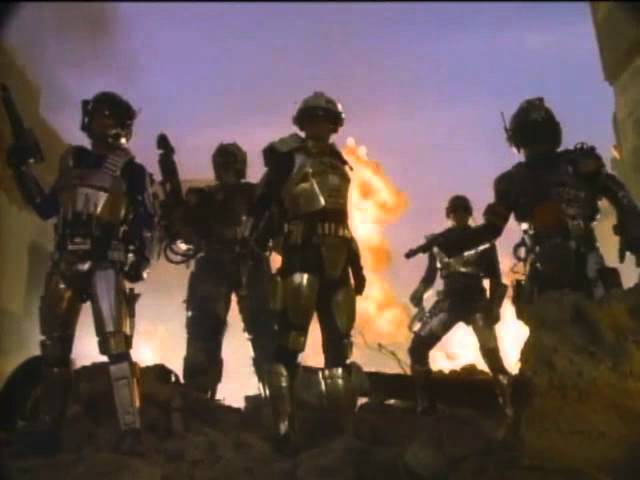
The show itself however was a very well-written and made show. Captain Power and the Soldiers of the Future was once dubbed “the most ambitious series ever filmed for television” by Jim Bawden of the Toronto Star, and he wasn’t exaggerating. This show was popular for a short time in the late 1980s, but it only lasted one season when Mattel pulled the plug after the toy tie-in failed to sell well, and it quickly faded into obscurity, but it still has a cult following. Back in the 1980s, VHS copies of all the episodes were available, but Captain Power was only available for a long time on fan-made bootlegs. VSC, on the other hand, released an official DVD release in 2011. This is fantastic news, because Captain Power is a show that should not be overlooked.
Captain Power, which was produced by Mattel and marketed as children’s television, attracted criticism due to its high levels of violence. It was costly, costing a million dollars per episode, and featured some groundbreaking special effects, including the first routine appearances of CGI characters in a live-action television series. It retains its popularity in part because the principal writer was J. Michael Straczynski, who later created Babylon 5. However, there are a lot of positive aspects to this program that gets lost in the midst of all the controversy.
It was one of the most complex science fiction programs of its era. This series is remembered for its fantastic storylines, some of which were penned by Babylon 5 creator J Michael Straczynski, a brilliant cast, and cutting-edge computer-animated special effects. Despite the fact that it was a Saturday morning children’s show, the atmosphere was dark and edgy. There were no conventional cute kids, cute animals, or hilarious sidekicks to detract from the compelling plots, and the adults acted in a mature manner with no frills added for children viewers. So, if you want to watch it now and missed it in the eighties, you would definitely enjoy it.
Captain Power is extremely campy, but it’s a nice kind of campy. The majority of the episodes feature scenes of guys in patched-together fibreglass armour firing pew-pew guns at one other, and the battle shows no knowledge of military tactics. Even when it’s at its worst, however, the show is bad-good rather than bad-bad. Captain Power is so awesome that he shoots people without even looking at them. Even the amateurish special effects and evident miniatures, by today’s standards, contribute to the show’s overall mood, making it more engaging rather than less. Even the crude CGI employed for Soaron and Blastarr adds to the impression that the BioDreads are a new species.
Another aspect that we obviously have to the praise is the already-discussed interactive toy line. This toy-line elevated this show to the point that consumers had never seen before. It added a feeling of excitement and novelty and thus, will always be recognised as a hallmark achievement of the series and its creators.
The complexity of subjects that were evident just adds to the shame of the show’s discontinuation. Almost every episode, of course, had a strong “War is Hell” message. This is relatively normal nowadays, but it was almost unheard of at the time. Naturally, the heroes’ continued victories over Dread’s sometimes stronger armies dealt with the power of the human spirit. This was also a highly rare occurrence at the time. And some episodes, such as “Freedom One,” which talks of the use of the radio medium as a voice of rebellion, have some excellent lessons to impart. For a show that was made for children’s entertainment, this is a very powerful piece of work.
Captain Power’s worldbuilding is also exceptional for the time and medium. The Survivors are shown as having formed a gypsy-like society with its own slang, and one episode set in Tech City has its own slang as well, all of which contributes to a fully immersive experience for viewers.
A regular episode consists primarily of action sequences with a lot of shooting and explosions, yet the violence is mostly non-lethal. Some of the characters are slaughtered, and the overall tone is sombre but not oppressive. It falls between between a children’s programme and an adult show in terms of acceptability. This is a great show, and everyone who enjoys “80s television shows should definitely see it.
Some elements in the show that made it interesting for adults as well
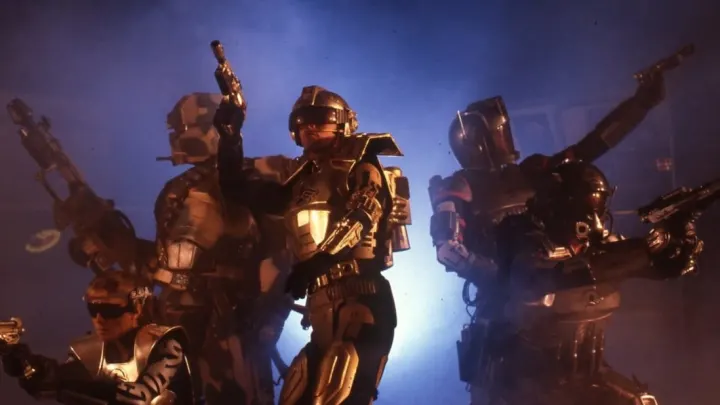
It has widely been said that this show also made for fun viewing for adults and here is why. Captain Power’s plot was mature both in tone and thematically, despite the emphasis on moving a lot of merchandise. Captain Power was notorious for incorporating sexual plot elements and swear words into a daytime TV show ostensibly aimed at a younger audience. Characters engaged in romance, flirtation, and even suggested sexual interactions were commonplace, and the dialogue was no exception. Although it may appear moderate by today’s standards, seeing a character cry “Go to Hell” before committing suicide and killing an entire legion of evil men was incredibly out of place in terms of children’s programming back in the day and I’m sure it is frowned upon even today.
Captain Power debuted just a few years after James Cameron’s The Terminator. This, combined with worries of a nuclear war between world powers, would create an environment conducive to this type of writing. The show is set after The Metal Wars, a horrific future conflict in which a group of people adopted technology as a religion and set out to conquer the Earth. This resulted in global devastation, turning the Earth into a graveyard with millions of people killed. This post-apocalyptic tone was also clearly not geared towards children and would fare far better with mature audiences.
The events that lead to The Metal Wars began with good intentions, but the Sins of the Father theme is clearly not appropriate for children’s television. This is alluded to in the two-part episode A Summoning Of Thunder, in which Captain Jonathan Power visits his father Stewart’s grave while memories of his youth are shown. Stewart’s remorse surfaces, causing him to address a pre-Dredd Lyman Taggart in order to save his little son John’s life. John’s life hangs in the balance as Taggart tries to persuade Stewart to join his cause. Stewart’s activities are motivated by a desperate desire to save John and atone for his role in humanity’s inevitable demise.
Another popular but clearly mature story aspect of the programme was digitising, which allowed Soaron and Blastarr to turn live things into digital storage. Though it didn’t appear to be that horrible on paper, it turned out to be a lot more devious in practise. Humans were digitised and fed into the Machine hive mind’s wellspring, where they were stripped layer by layer and exposed to horrific psychological tortures. To most people, this type of confinement was a fate far worse than death.
Betrayal is a major theme in several Captain Power episodes. Each character had his or her own motivation, but their combined actions generated a sense of impending doom and suspicion. While Power and his squad fought for humanity’s emancipation and freedom, others did not agree. The crew would be stung by multiple betrayals, making it difficult to maintain their positivity in the face of Lord Dredd’s growing threats. The last betrayal would result in a disastrous first season finale, leaving viewers to wonder whether Jonathan Power would seek retribution or take the high road once more. Possibly the most depressing conclusion to any children’s show ever.
Last but not least, the Bio-Dread Empire was not beyond employing a variety of nefarious tactics to attain its objectives, but they definitely were not fit for airing as a Saturday morning cartoon. The show discussed the use of chemical, technical, and biological weapons against civilians, drawing another link with Nazi Germany’s actions during WWII. Hawk Masterson fights to save the life of a young kid who is infected with a deadly plague as a result of Lord Dredd’s doctors’ tests on him in one particularly memorable episode. As the epidemic spreads, he is given the option of either giving up the boy or dying trying to save him.
In 2012, the series received a long-awaited DVD release to commemorate its 25th anniversary. In late 2012, executive producer Gary Goddard indicated that a reboot of Captain Power, dubbed Phoenix Rising, was in the works. The showrunners have been chosen as Judith and Garfield Reeves-Stevens. With Goddard out of the picture totally and the most recent update from 2016, the revival is either buried in Development Hell or more likely scrapped but fans continue to believe that it is time for a reboot. However, this show has over the years gained a cult following and considering this show is definitely for adults more than it is for children, it has found a niche audience. Have you watched Captain Powers and the Soldiers of the future? Let us know in the comments below!
